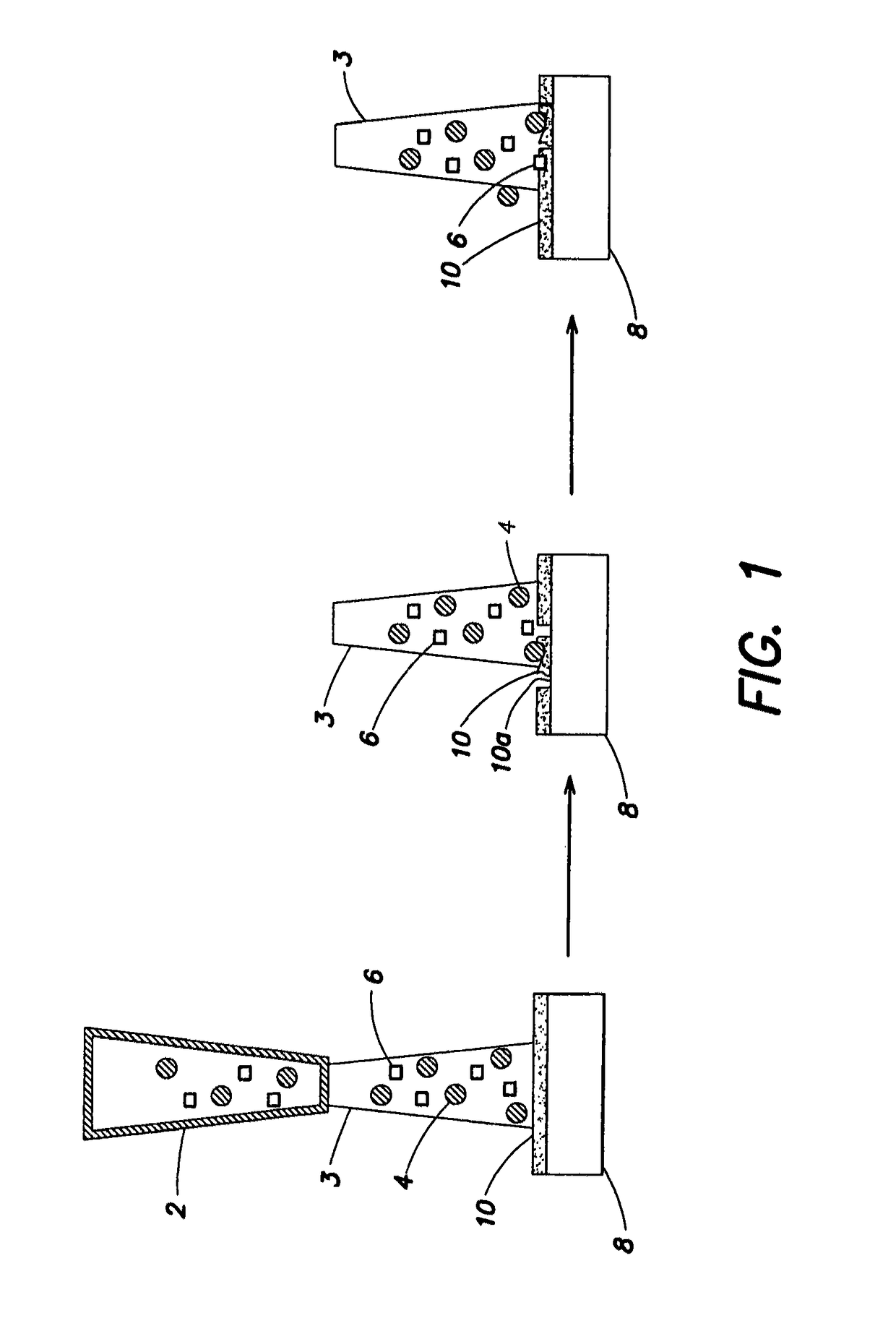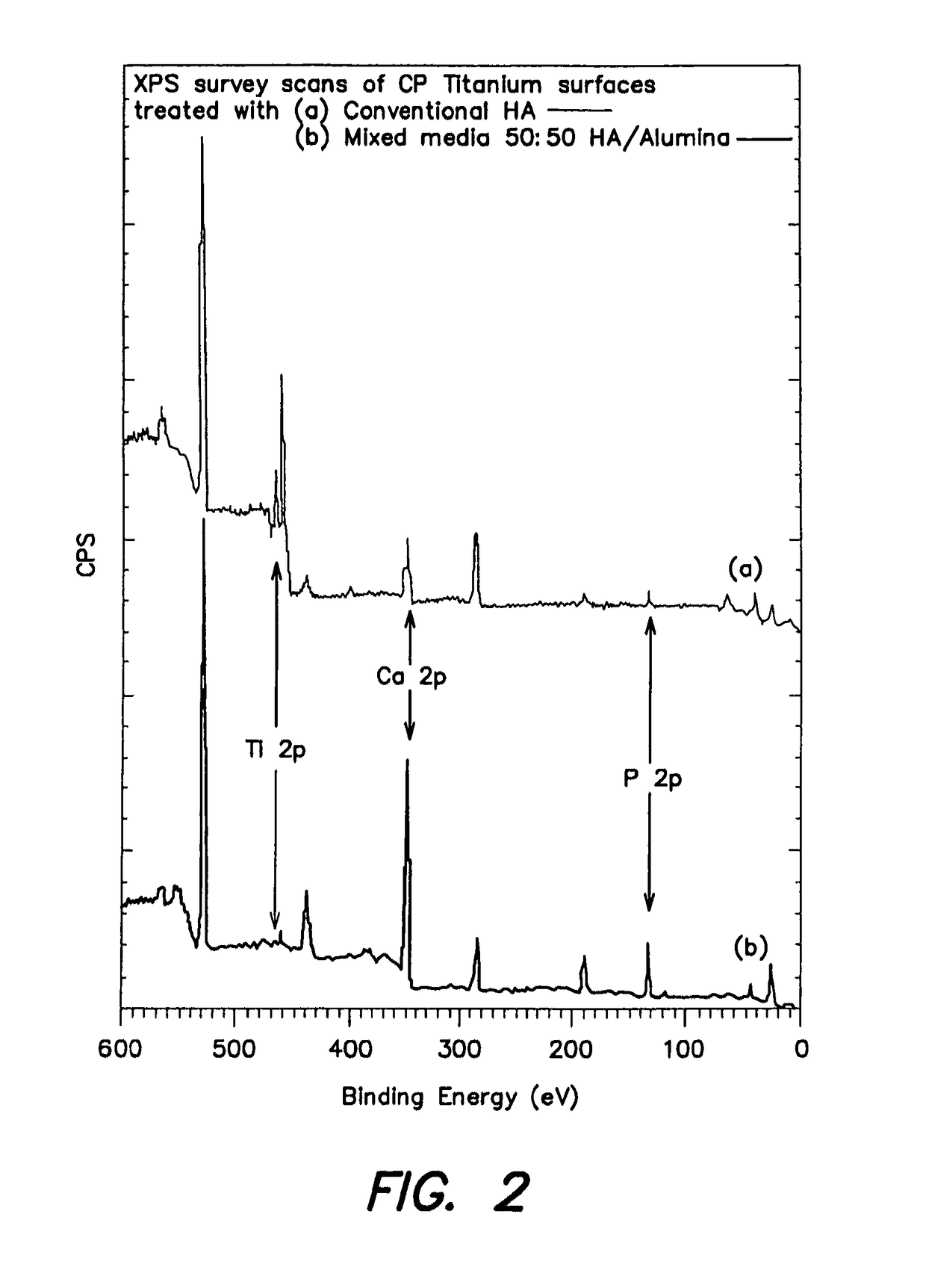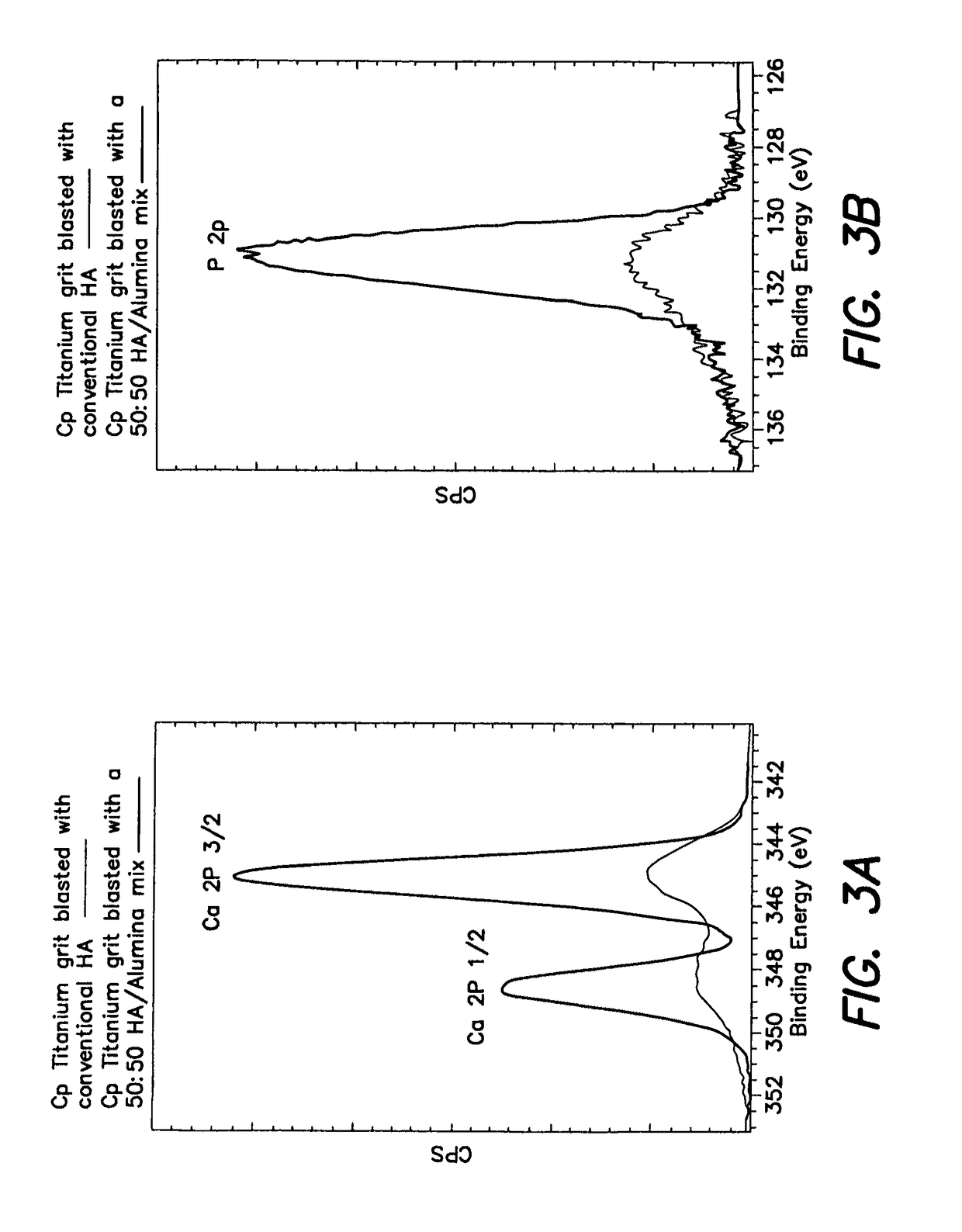Method of doping surfaces
a technology of surface doping and surface treatment, which is applied in the field of methods, can solve the problems of inability to achieve strong bonding with the surface of metal, inability to achieve optimal clinical treatment, and no treatment technique as such provides the ideal surface for optimal clinical treatment,
- Summary
- Abstract
- Description
- Claims
- Application Information
AI Technical Summary
Benefits of technology
Problems solved by technology
Method used
Image
Examples
example 1
[0166]This example describes the modification of a titanium substrate using hydroxyapatite (HA) as the dopant and alumina bead as the abrasive.
[0167]A mixed media was prepared consisting of 50 weight percent alumina (White Saftigrit: Mesh size 150, 88 micron particle size, Mohs hardness 9, Guyson international Ltd) and 50 weight percent HA (Fluka Synthetic hydroxyapatite (Fluka production GmbH, Buchs, Switzerland, part of the Sigma-Aldrich family). A Rocatec™ grit blaster operating at a pressure of 5 bar was used to grit blast a 2 cm×2 cm CP titanium coupon (Titanium Sheet Grade 2 Medical to ASTM F67 Spec.). The nozzle to surface distance was 1 cm and the nozzle was held at 900 to the surface. The silicon carbide nozzle had an orifice diameter of 1 mm and traversed the surface at 2 cm per sec. The surface was subjected to three passes.
[0168]Two further samples of Titanium (Titanium Sheet Grade 2 Medical to ASTM F67 Spec.) were subjected to the same treatment but with the media consi...
example 2
[0175]This Example describes the modification of a titanium substrate using hydroxyapatite as the dopant and silica bead as the abrasive.
[0176]A mixed media was prepared consisting of 50 weight percent silica bead (Honite 14: 75-150 micron particle size range, Mohs hardness 5 Guyson international Ltd) and 50 weight percent HA (Fluka Synthetic hydroxyapatite). A Rocatec™ grit blaster operating at a pressure of 5 bar was used to grit blast two 2 cm×2 cm CP Titanium coupon (Titanium Sheet Grade 2 Medical to ASTM F67 Spec). The nozzle to surface distance was 1 cm and the nozzle was held at 90° to the surface. The silicon carbide nozzle had an orifice diameter of 1 mm and traversed the surface at 2 cm sec−1. The surface was subjected to three passes.
[0177]The samples were then subjected to a cleaning treatment involving 20 minutes ultrasonic washing in deionized water to remove any material that was not intimately affixed to the surface. After the ultrasonic cleaning the samples were rin...
example 3
[0180]This Example describes the modification of a titanium substrate using hydroxyapatite / gentamycin as the dopant and alumina bead as the abrasive.
[0181]A mixed media was prepared consisting of 50 weight percent alumina (White Saftigrit: Mesh size 150, 88 micron particle size, Mohs hardness 9, Guyson international Ltd), 40 weight percent HA (Fluka Synthetic hydroxyapatite) and 10 weight percent Gentamycin. A Rocatec™ grit blaster operating at a pressure of 5 bar was used to grit blast three 0.5 cm×0.5 cm CP titanium coupons (Titanium Sheet Grade 2 Medical to ASTM F67 Spec). Control coupons were blasted with HA and alumina only. The nozzle to surface distance was 1 cm and the nozzle was held at 900 to the surface. The silicon carbide nozzle had an orifice diameter of 1 mm and traversed the surface at 2 cm sec−1. The surface was subjected to three passes.
[0182]The samples were then subjected to a cleaning treatment involving 20 minutes ultrasonic washing in deionized water to remove...
PUM
| Property | Measurement | Unit |
|---|---|---|
| pressure | aaaaa | aaaaa |
| pressure | aaaaa | aaaaa |
| pressure | aaaaa | aaaaa |
Abstract
Description
Claims
Application Information
 Login to View More
Login to View More - R&D
- Intellectual Property
- Life Sciences
- Materials
- Tech Scout
- Unparalleled Data Quality
- Higher Quality Content
- 60% Fewer Hallucinations
Browse by: Latest US Patents, China's latest patents, Technical Efficacy Thesaurus, Application Domain, Technology Topic, Popular Technical Reports.
© 2025 PatSnap. All rights reserved.Legal|Privacy policy|Modern Slavery Act Transparency Statement|Sitemap|About US| Contact US: help@patsnap.com



